This is Not A Game
Since we are a board gaming family, it has been on my mind that my kids should learn some classic fundamental games that have withstood the test of time. I wanted to teach critical thinking skills and strategies in game play, and there came a point in my parenting journey that I decided to teach my kids to play chess. But how? It does not stand out as bright and colorful. What is the point in moving the pieces around like so?
If you have kids, you know that theme is everything. You could make kids try really difficult things by putting their favorite character on a box. But how do you get children’s buy-in to a “theme-less” abstract strategy game? You reel them in by building up their affection for the chess pieces. You weave a story together that is silly and cute and sometimes ridiculous so that the kids play with the game pieces, very much like they would play with their make-believe toys. That is what Story Time Chess has set out to do with a lot of success.
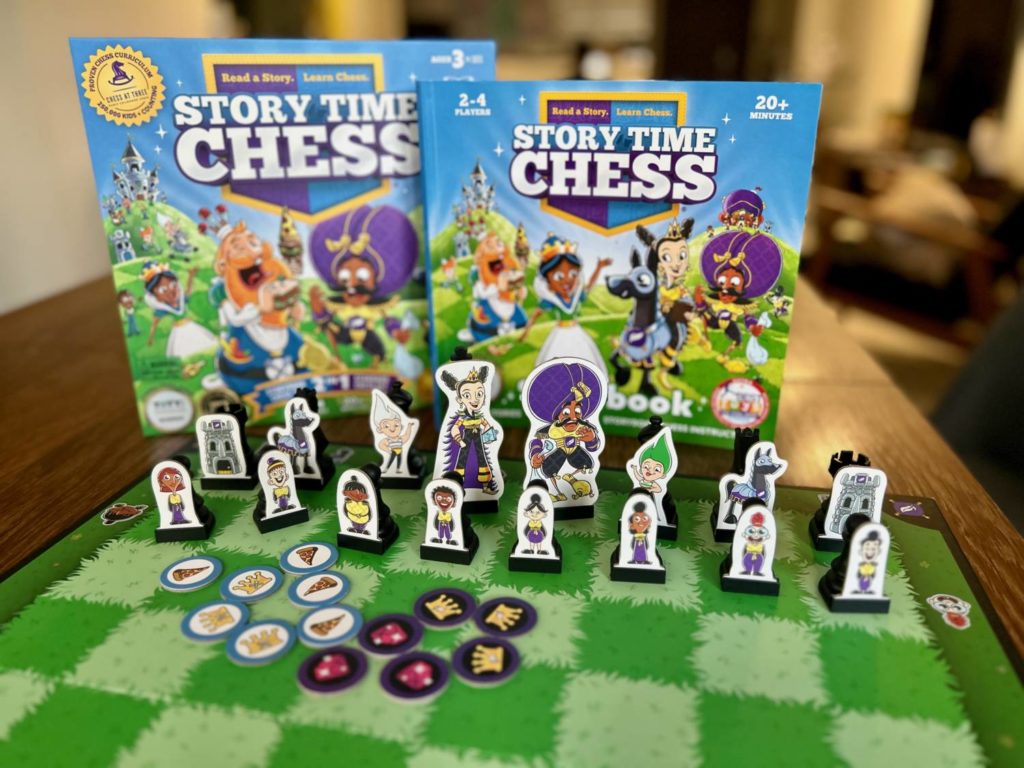
This is not my first attempt at trying to teach my kids chess. I have an older child who learnt how to play Chess using the No-Stress Chess set with great success. When the time was ripe, I realized my younger child would actually benefit from a different approach. She loves comics and storylines. Illustrations are her world, so regular chess pieces hold very little appeal. This made Story Time Chess an almost perfect solution.
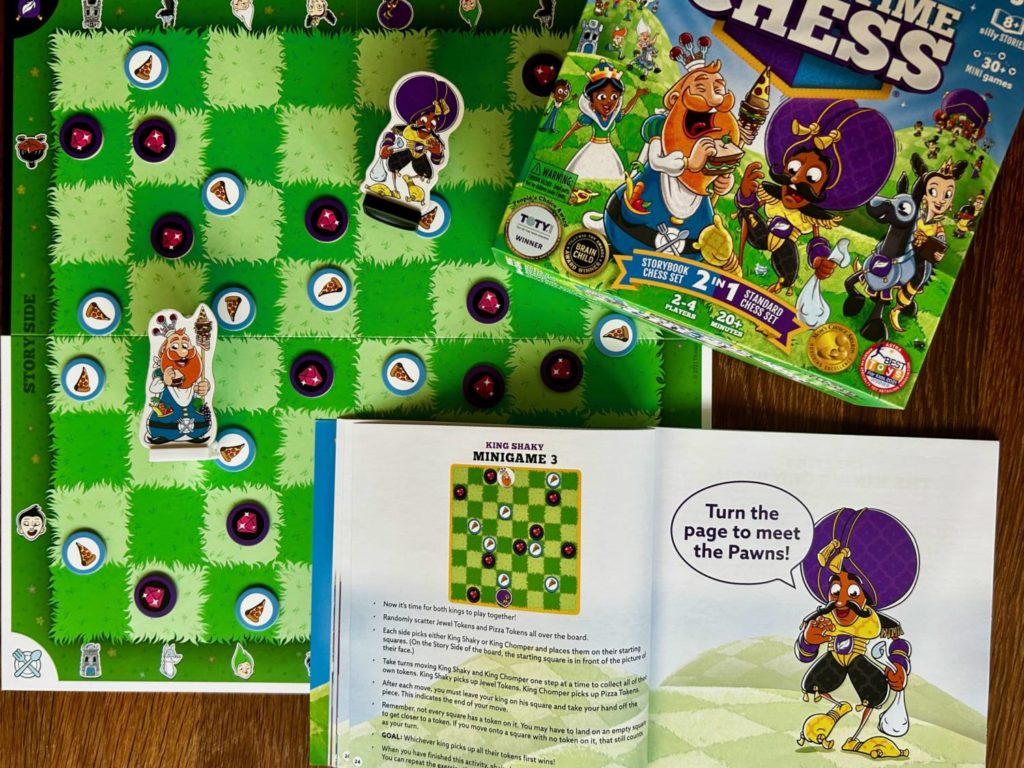
A Book Review
It does seem like a very big box for just “chess”. The extras that make up the big box are a two-sided game board; one side is the regular chess board and the other is quite literally your garden variety board—the story after all takes place in the garden. There are the 32 standard chess pieces which are accompanied by 32 character cut-outs, a few mini-tokens used in the mini games as well as the Story Time Chess book.
It is the story book, as well as the character cut outs that go on to the chess pieces, which make this worth playing with your kids.
There are 8 chapters in the book which tell a silly story about the characters and their corresponding pieces. The White King and the Black King have different personalities. The King’s children are the pawns, who love to race. The Bishops love black or white. The Knights gallop, gallop and step to the side. The White Queen’s job was to be best friends with every person while the Black Queen is an Architect. Remember what I said about the silliness? There’s not a whole lot of coherence either.
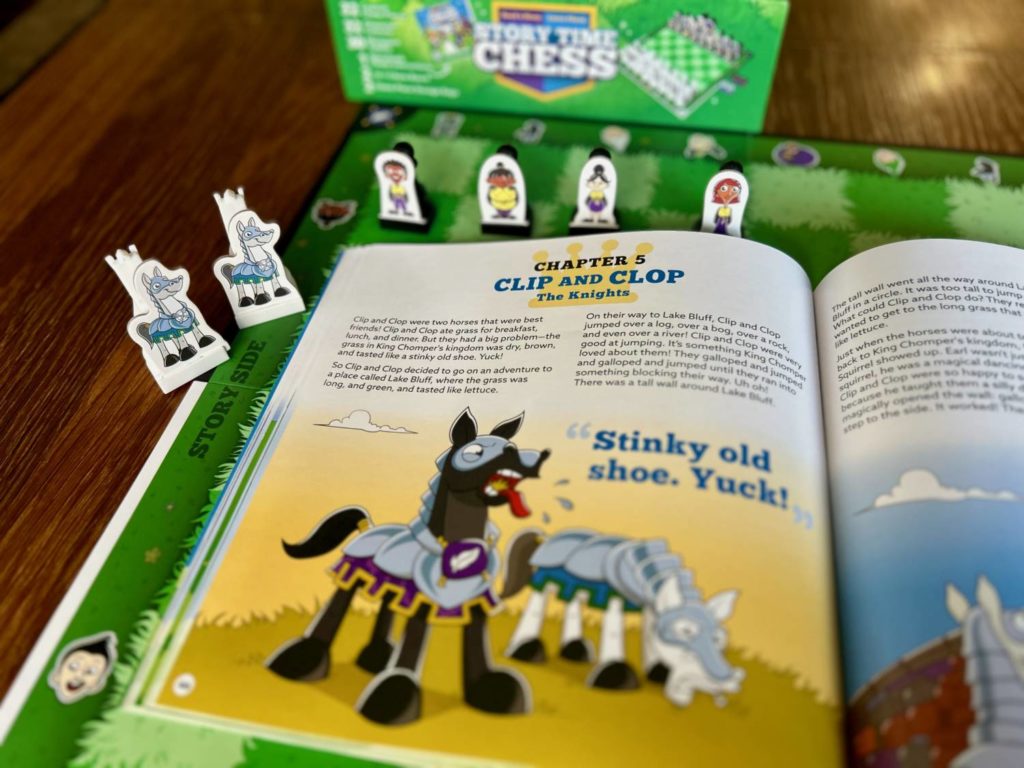
It was a bit of a shock to see the very serious game of Chess, and its pieces, personified into such satirical characters to be honest. Castles were made of pillows and towers served as pantries. The setting is almost like Wonderland, strange and crazy. It does not take the vibe of Chess seriously at all. It took everything in my being to put my stereotypes aside. But my resistance dissolved when I put themy book in my daughter’s hands.
The plot was so ludicrous that it had her in stitches. Toward the end of each chapter, she looked forward to the mini-games that the characters in the story were playing. Sometimes, the King’s children loved to race and so we played games having the pawns race to opposite ends of the board. Later on, in the story, the Bishops were trapeze artists, performing “The Great Diagonal” show and so we made them dance on the board in diagonals.
I would consider the first mini-games of each chapter to be more activities rather than games since there is no competition. The objective of those early mini-games are to familiarize the kids with how those pieces move. Then finally there is a proper mini game, with a clear winner and a loser, to demonstrate how to use the pieces’ movements to attack, defend, or avoid opponents.
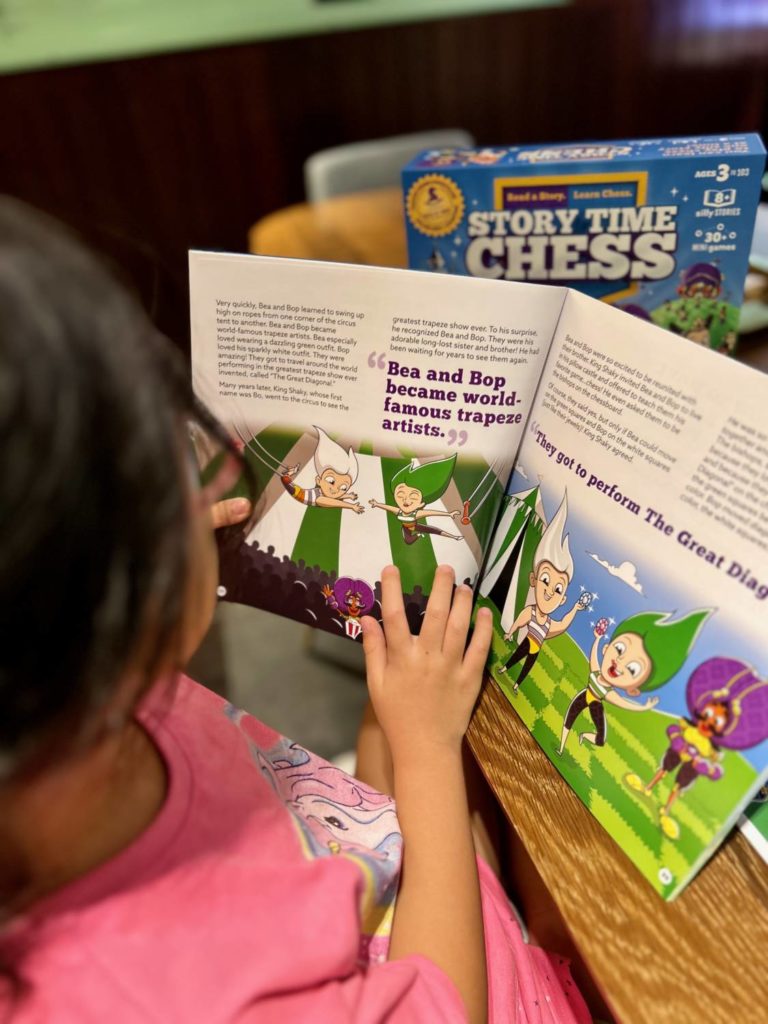
Once you get to the end of the book, the kids know all the pieces on the chessboard and how to move them and they had fun learning. Somehow the book suggests they will be able to use this knowledge to play “Capture The King”. But there are still so many more steps to learning how to play chess other than knowing how the pieces move. It is a long stretch for them to actually know how to use them to capture the King. There is still the problem of knowing which is the best piece to move at any time, as there are so many options for them to choose. Up till now, they haven’t learnt strategies and tactics to help them attain their goal either. That is supposed to be covered in Story Time Level 2 Strategy Storybook and Level 3 Tactics Storybook.
Kids love crazy, over the top characters and stories. So creating a story with bizarre characters is a really effective way to pique their interest into the game and learn about the pieces. Kids also love playing make believe which makes the story side of the chess board become a more open environment, a stress-free space for them to explore different ways the game pieces can be moved and used to capture opponents, without the daunting threat of a “serious game” of chess.
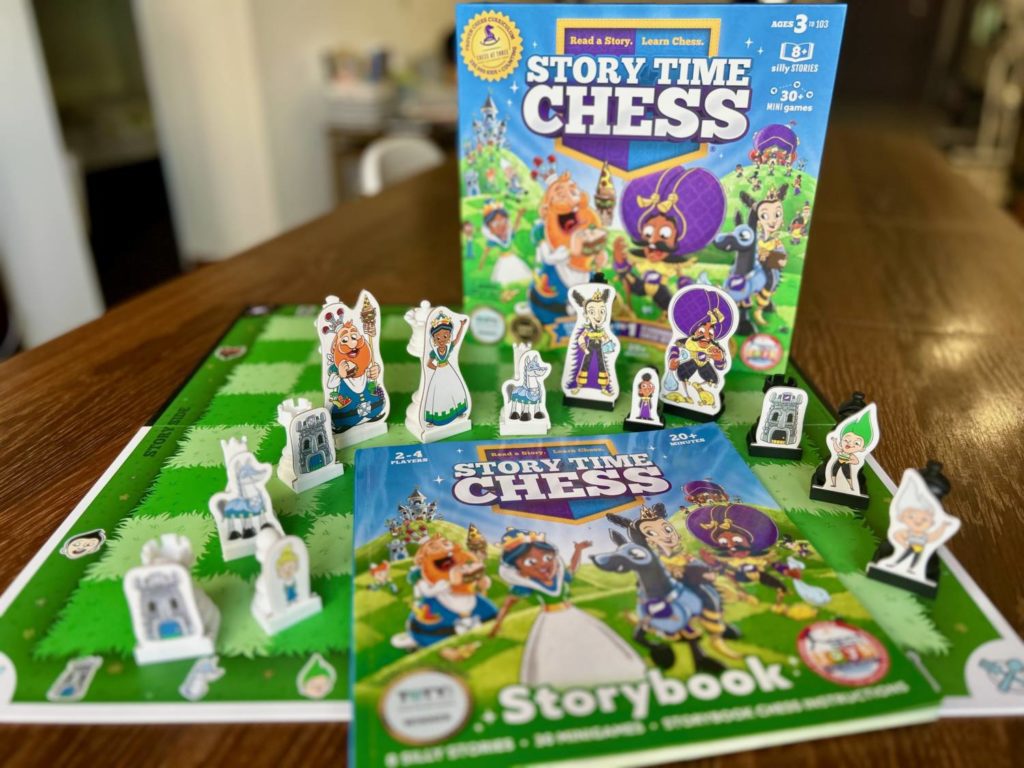
Who Lives In This Wonderland?
The box states the game is for kids ages 3 and up. The story itself would be about right for a three-year old although they most certainly would not be reading it. If your seven-year old still enjoys a vivid imagination, it could still work. Mine liked the story, but was unimpressed by the first two activities which masqueraded as mini-games in each chapter. She did, however, always enjoy the final mini-games which had a proper competition. If I had to pitch the story, the minigames, and the playing pieces, I would say this would be perfect for five-year olds; the story would work, and they would still be keen on the activities and open to playing make-believe on the story side of the game board.
We read a chapter and played the accompanying mini-games once a week so as not to overwhelm her and keep the game fun. It took us eight weeks to finish it. But now that we have, and my seven year old knows the pieces and how they move, it is a bit frustrating for her that she still does not have all the tools to play a game successfully.
If you have really young children, they love repetition so you could potentially get a lot of play out of the box if you make the Story Time Chess accessible to them from a very early age. This would make an excellent gift for any four-year old’s birthday!




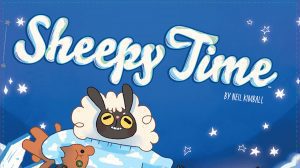


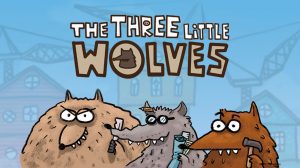




Add Comment